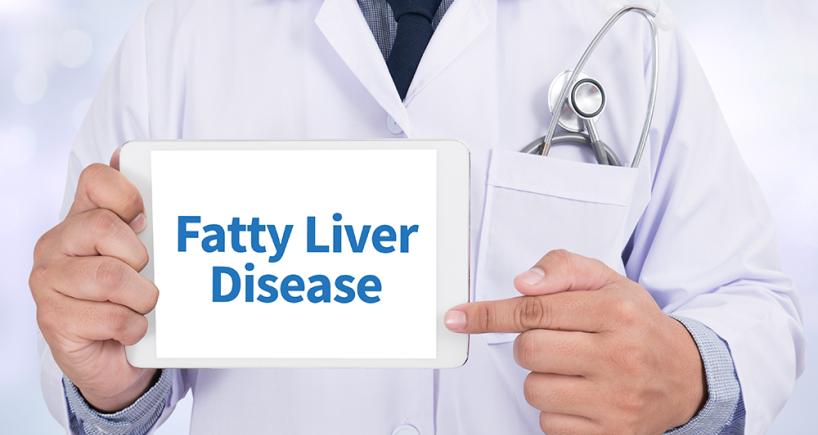
Fatty liver Disease: What is it?
Fatty liver disease: What is it?
Liver performs wide variety of functions in the body, that includes processing what we eat and drink, and filtering harmful substances from the blood. Fatty liver or Non alcoholic fatty liver disease (NAFLD) develops when the body makes too much fat or can’t metabolize fat efficiently enough. The excess fat is stored in liver cells where it accumulates and causes fatty liver disease. Under the microscope, NAFLD looks just like alcohol-induced fatty liver disease, but it occurs in people who consume little or no alcohol.
What is the prevalence of NAFLD in India?
In rural India - a region characterized by traditional diets and lifestyles, the prevalence of NAFLD is low (~9%), whereas in Urban populations - mimics Western prevalence and rates vary between 16% and 32%. NAFLD is emerging as a leading cause of end-stage liver disease.
Who are at risk?
People who are overweight/obese or have diabetes, high cholesterol or high triglycerides. Rapid weight loss and poor eating habits also may lead to non-alcoholic fatty liver disease.
What are the symptoms and complications of NAFLD?
NAFLD often has no symptoms. When symptoms occur, they may include fatigue, weakness, weight loss, loss of appetite, nausea and abdominal pain.
However, some people with NAFLD go on to develop irreversible liver damage that can result in liver failure and cirrhosis. Symptoms of advanced liver disease include spider-like blood vessels, yellowing of the skin and eyes (jaundice), itching, fluid build up and swelling of the legs (edema), abdomen (ascites), and mental confusion. Not enough is known yet, to predict exactly who will progress to serious liver disease, but certain risk factors have been identified that may help gastroenterologists fine-tune diagnosis and treatment.
NAFLD is not a single disease but rather a spectrum of disorders, all marked by the accumulation of fat inside liver cells.
NAFLD has mainly two groups:
- Non-alcoholic fatty liver (NAFL): otherwise known as simple fatty liver
- Non-alcoholic steatohepatitis (NASH): in which besides fat in the liver there is inflammation and fibrosis
Does type of fatty liver disease matter and why?
Yes.In most people, simple fatty liver does not cause sickness related to the liver, whereas those with NASH have inflammation and injury in their liver cells. However, it must be remembered that persons with fatty liver disease have a higher prevalence of non-hepatic diseases like atherosclerosis, diabetes and cardiovascular disease. Hence, it should not be ignored.
NASH increases the risk of progression to more serious conditions like fibrosis (scarring) of the liver, cirrhosis, and liver cancer. NASH cirrhosis is one of most common indication for liver transplantation.
Why is it important to diagnose NAFLD early?
Cirrhosis, liver cancer, and liver failure are serious consequences of NAFLD that can be life threatening. Once these stages of liver disease develop, treatment options are limited.That’s why it’s important to diagnose liver disease early, in the inflammation and early fibrosis stages. If you are treated successfully at these stages, your liver may have a chance to heal and recover.
How if NAFLD diagnosed?
Most people with NAFLD have simple fatty liver and not NASH; only 3% to 7% of NAFLD have NASH.It takes a liver biopsy to know if a person has simple fatty liver or NASH. But liver biopsy is invasive, costlier and has its own risks and complications. Luckily, there are sensitive noninvasive tests which can accurately estimate the amount of fibrosis within the liver - like elastography (Transient elastography or Fibroscan - a technology which uses soundwaves to estimate fibrosis based on the stiffness of the liver and also the fat content within the liver).
How can it be prevented?
Maintain a healthy weight, eat a healthy diet, exercise regularly, avoid alcohol and drugs.
Consult gastroenterologist/ hepatologist regarding NAFLD and possible treatment options
Questions to ask your doctor
- What condition do I have that suggests NAFLD?
- Can NAFLD be reversed?
- Do I have cirrhosis or scarring of the liver?
- If I do have cirrhosis – how far has the scarring progressed?
- What kind of lifestyle changes and diet I need to make?
- What kinds of physical activities would be OK for me to do?
- Is there a treatment or medication for NAFLD?
- Will losing weight help me to get rid of this disease?









